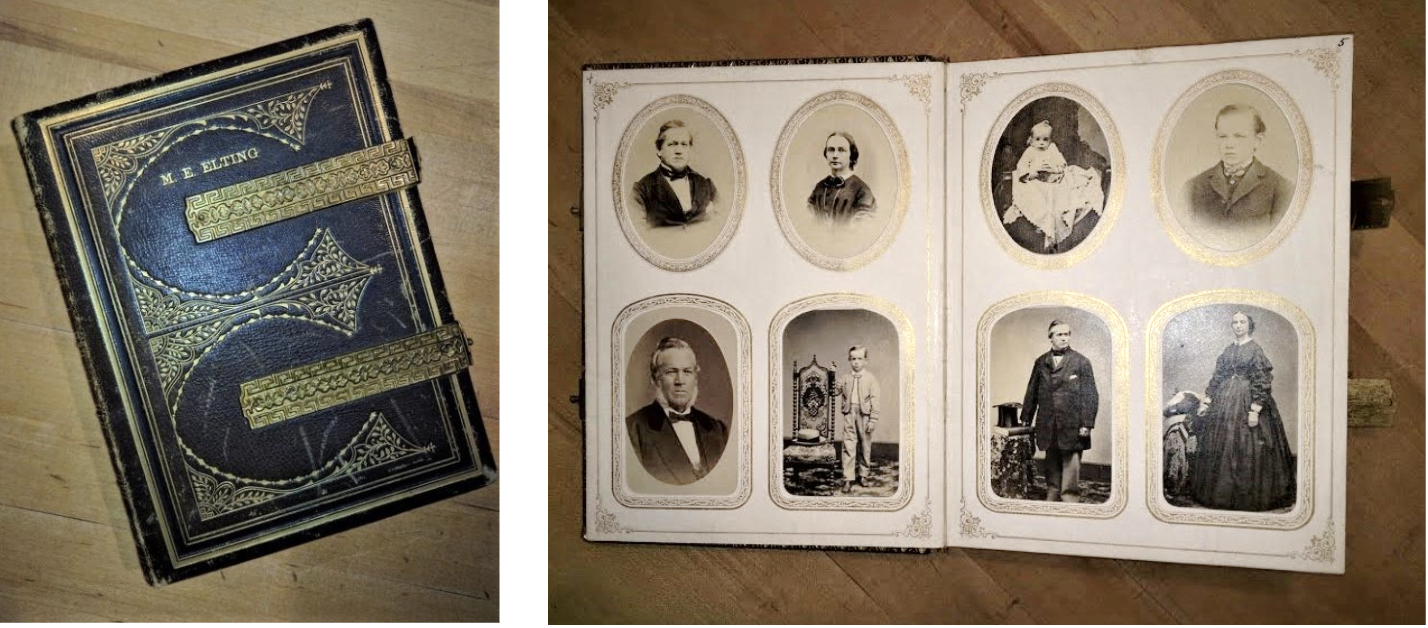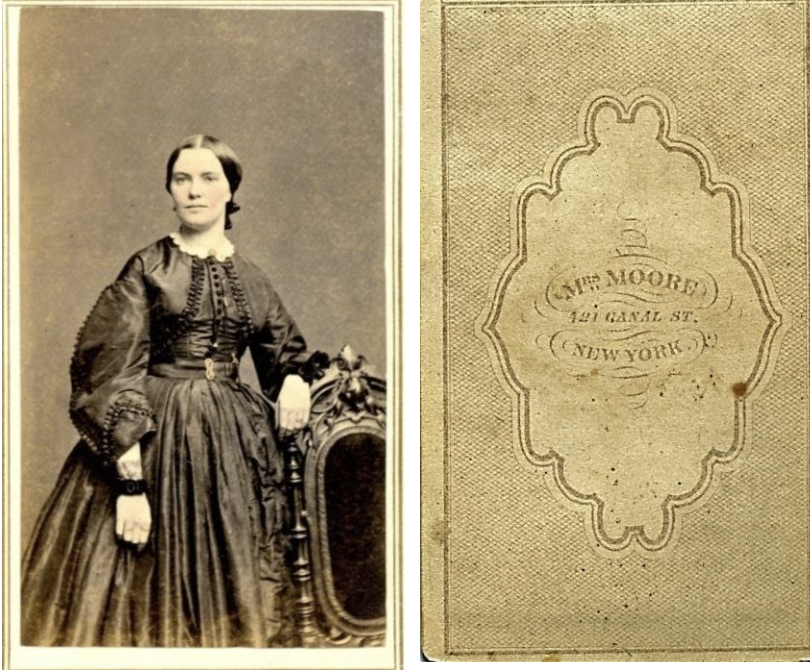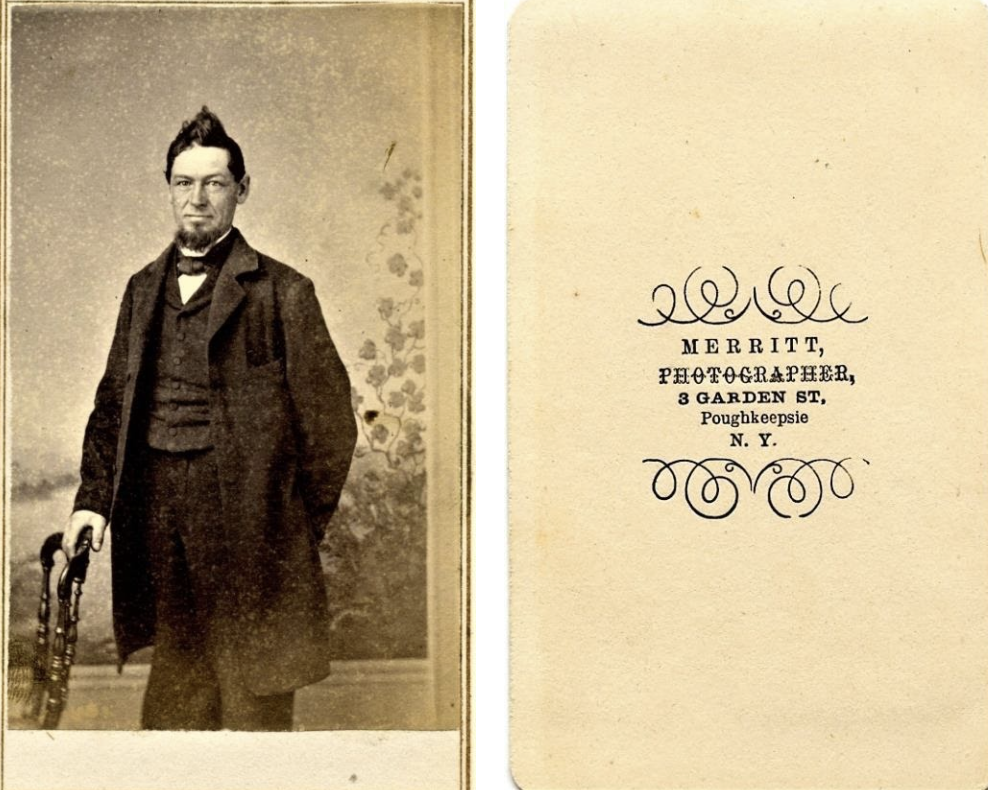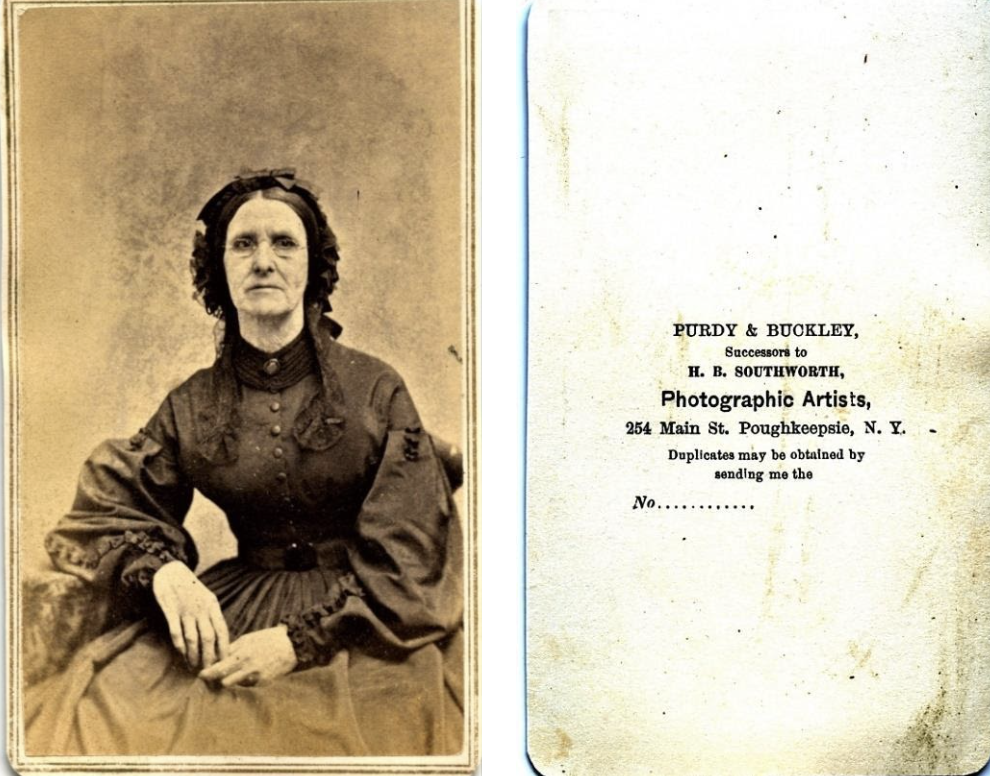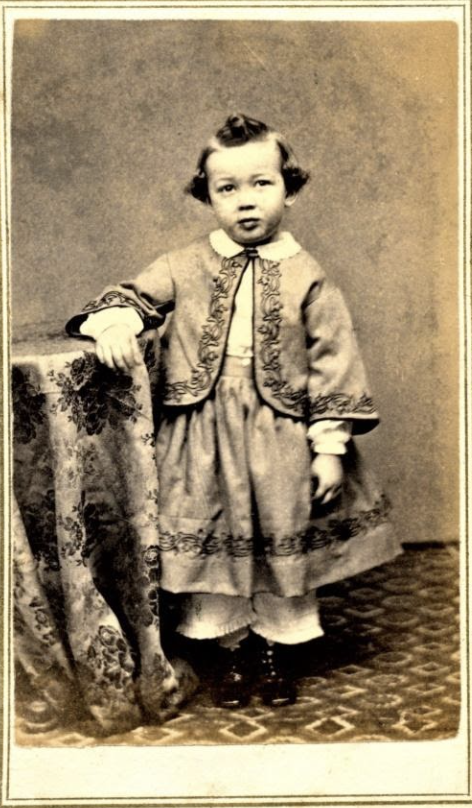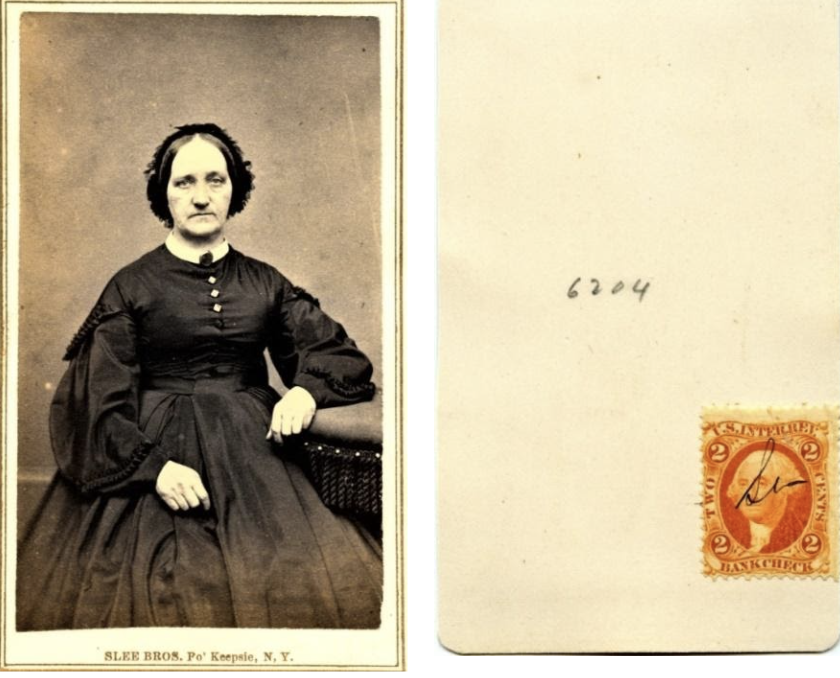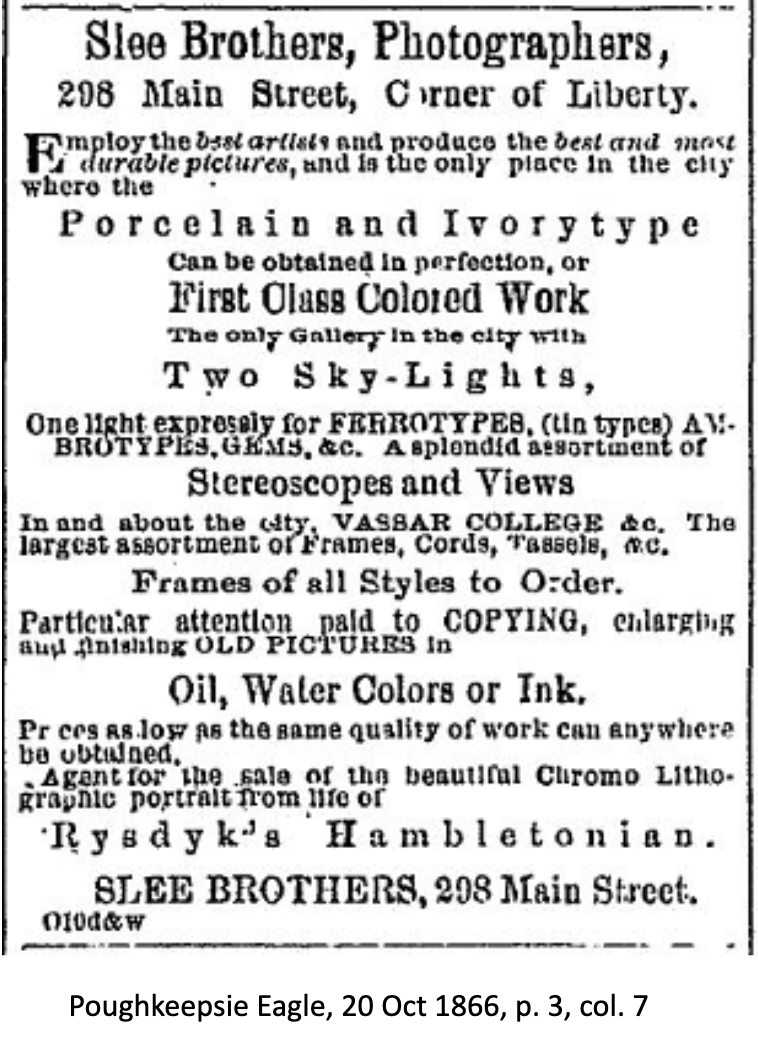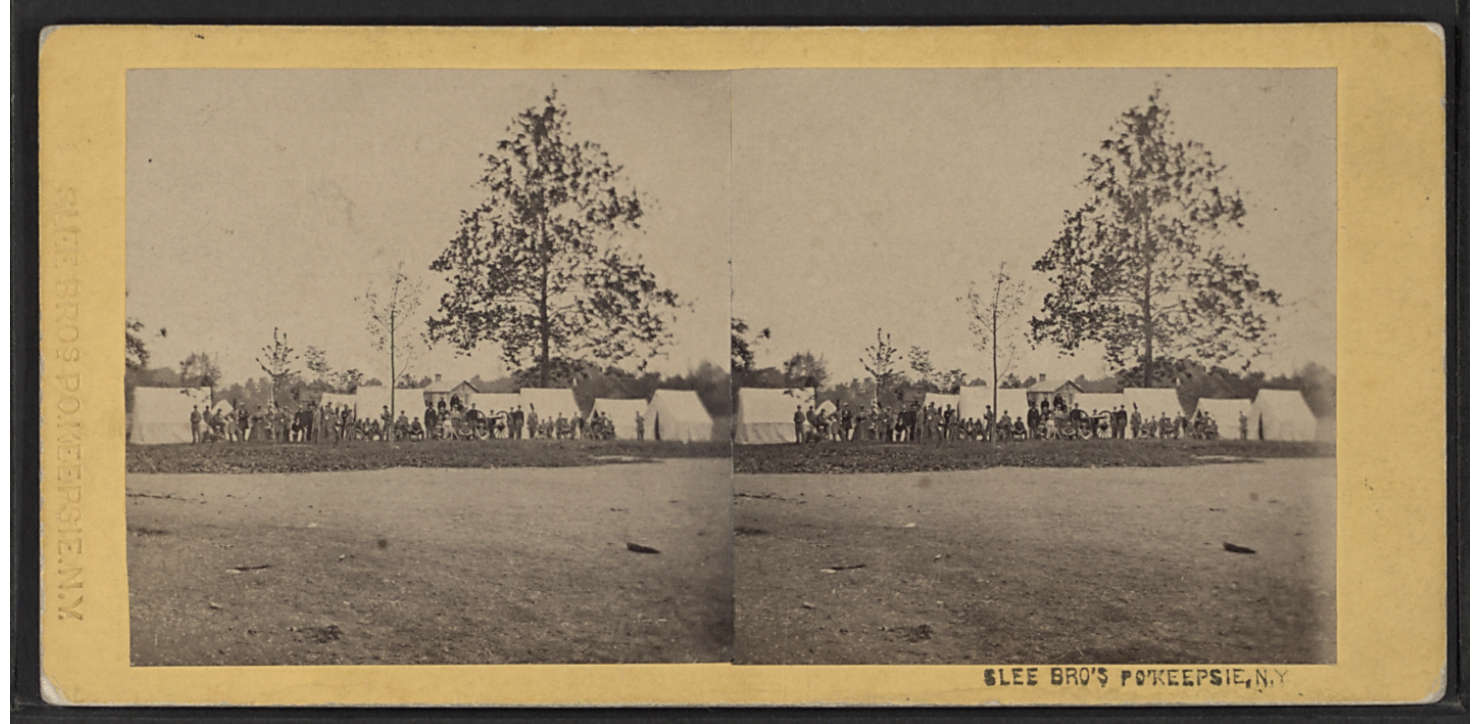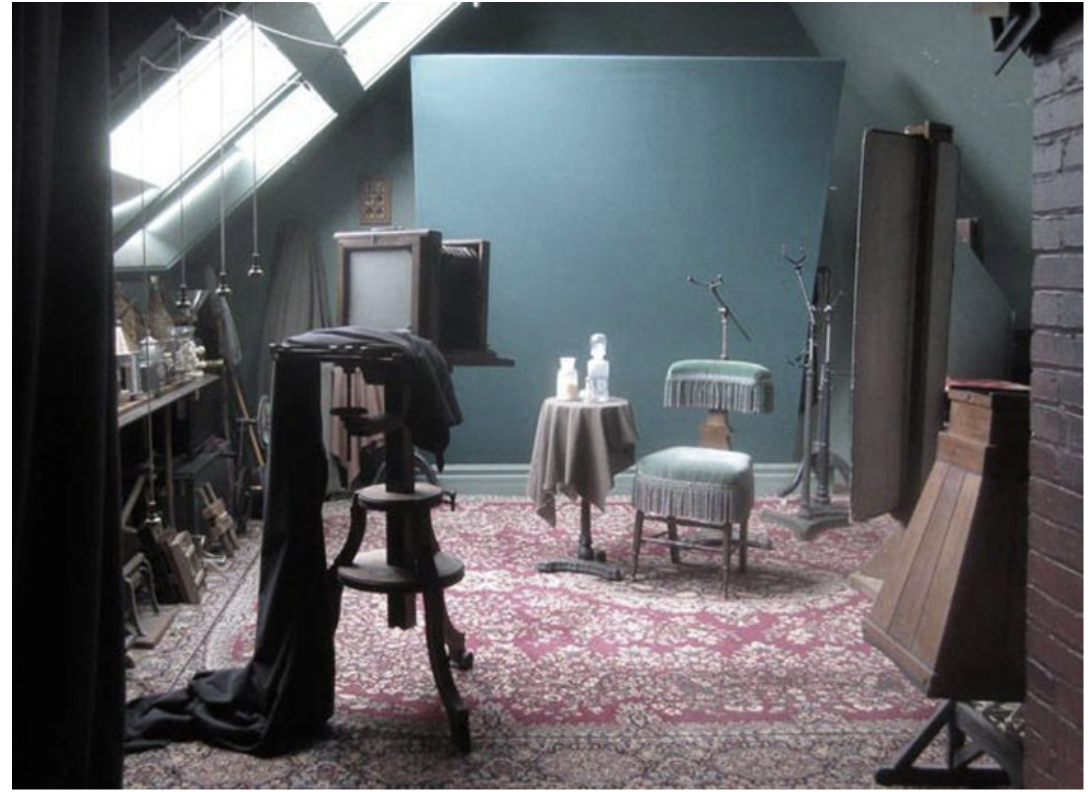|
What did our ancestors look like? Before the advent of photograph, the only images that survive are portraits of those who could afford to be painted by a professional artist. That changed in 1839, when Louis Daguerre introduced the daguerreotype which allowed an image to be produced on a silver coated copper sheet.Technology advanced with glass plate negatives (ambrotypes) and in 1856, tintypes ferrotypes). Paper images appeared in 1860 and carte du vistas, photographs the size of a visiting card (2.5" x 4"), became popular. Carte du vistas were collected in special albums which were proudly displayed in Victorian parlors. The Town Historian's collection includes a beautiful album of Elting family carte du Vista (CdV). Someone has thoughtfully recorded the names of some of the people in this album (that is not always One of the CdVs in this album is a photograph of Sarah Elizabeth Dobbs was taken by Mrs. Moore, a young woman from Prussia who had a studio on Canal St in New York city in the 1860s. Yards of silk must have gone into the making of this dress. Many of the photographs were taken by photographers in their Poughkeepsie Studios. Ezekiel J. Elting had his photograph taken by C. Merritt, a Photographer working on Garden St. in Poughkeepsie (no that’s not hat hair…his look is quite stylish for the time) The background for the photograph is a painted mural. The names of photographers are helpful in dating photographs. Imagine traveling on the ferry across the Hudson to Poughkeepsie in this voluminous dress to attend an opera at the Bardavon or have your photo taken. The photographs record how people looked and dressed in Highland during the Civil War Era. Girls always had their hair parted in the center and boys had their hair parted on the side. Boys wore dresses until they were 5 or 6, when they “graduated” to pants. So this is a photograph of a young boy, about three or four years old, dressed in his best outfit. Revenue stamps can be used to identify the dates of some of these photos. These stamps , required from 1 Aug 1864 to 1 Aug 1866, were used to raise revenue for the Civil War. The 2 cent stamp on the reverse of this photograph of an unknown woman in the Elting album tells us this photograph was taken around the end of the Civil War and cost less than 25 cents. The chair in this photograph, called a "fringe chair" because of the fringe along the side arm, back and bottom skirt, was a standard prop for professional photographers of this era. It was patented in 1864. The back and the side arm could be raised and lowered allowing the photographer to pose his subjects in different positions. The photograph was taken by Slee Brothers in Poughkeepsie. As noted in their advertisement, one of the advantages of the newer technologies was the ability to make copes. The skylights were also important because other lighting options were limited. Some of the features of the Slee Brothers studio which are mentioned in their advertisement can be seen is this recreation of a photographic studio. This is a stereoptic view of a Civil War encampment in Poughkeepsie also taken by Slee Brothers. If you'd like to learn more about the history of photography, this an interesting article
https://notquiteinfocus.com/2014/10/16/a-brief-history-of-photography-part-11-early-portrait-photography/
0 Comments
Leave a Reply. |
Archives
November 2021
Categories |
Location |
|
